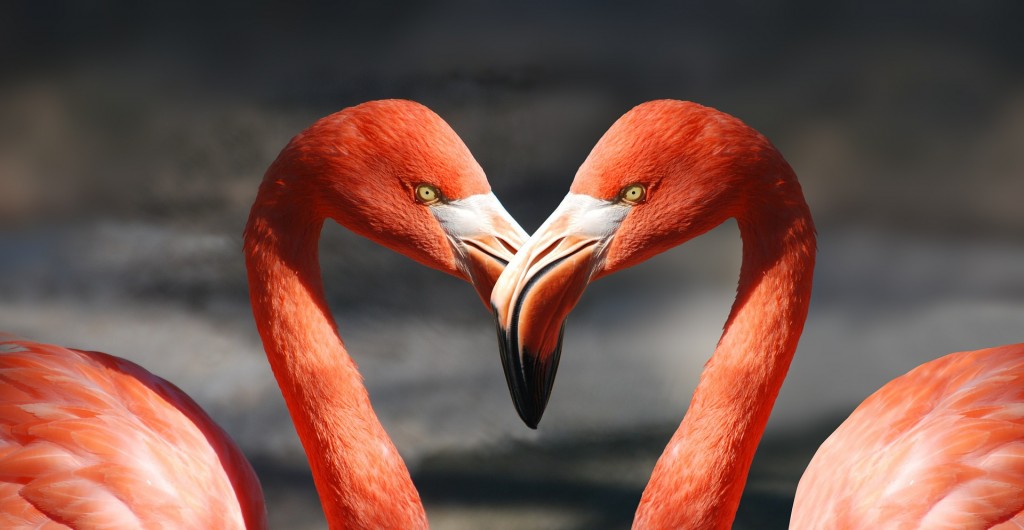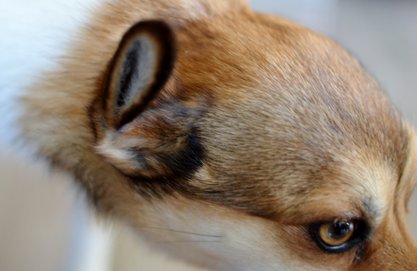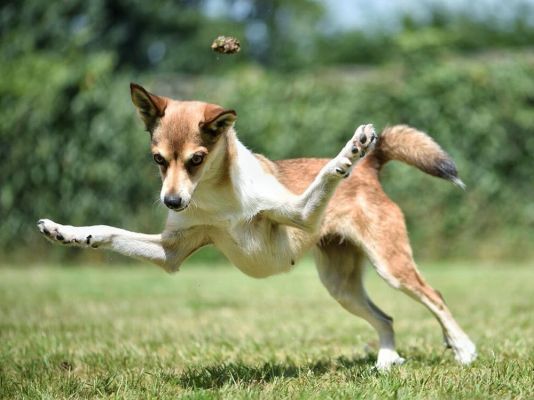My guess is that for buffalos it is smarter to travel against the storm while for cows it makes more sense to travel with the storm as that's what they have evolved for.Buffalo travel and head against the direction of a storm facing it whereas cows go with the storm in the same direction.
Which is smarter? Although articles suggest or say the buffalo is as they may spend less time in the storm by doing that, I would argue the stress or extra pain of dealing with the storm elements head on at their faces and not being able to see as well is not worth any very short amount of time saved dealing with the storm by heading against those elements.
-
Feeling isolated? You're not alone.
Join 20,000+ people who understand exactly how your day went. Whether you're newly diagnosed, self-identified, or supporting someone you love – this is a space where you don't have to explain yourself.
Join the Conversation → It's free, anonymous, and supportive.
As a member, you'll get:
- A community that actually gets it – no judgment, no explanations needed
- Private forums for sensitive topics (hidden from search engines)
- Real-time chat with others who share your experiences
- Your own blog to document your journey
You've found your people. Create your free account
You are using an out of date browser. It may not display this or other websites correctly.
You should upgrade or use an alternative browser.
You should upgrade or use an alternative browser.
Animal Facts that are surprising/amazing/weird
- Thread starter tree
- Start date
There are many articles written in a philosophical mode
regarding buffalo vs cattle. They seem to be based on
the book by Steve Rinella, American Buffalo: In Search of a Lost Icon.
Please make sure to provide a source for your 'animal facts.'
Otherwise we could end up with amazing *facts*, like the one everybody
used to know: Horsehair in puddle? Turns into baby snakes.
regarding buffalo vs cattle. They seem to be based on
the book by Steve Rinella, American Buffalo: In Search of a Lost Icon.
Please make sure to provide a source for your 'animal facts.'
Otherwise we could end up with amazing *facts*, like the one everybody
used to know: Horsehair in puddle? Turns into baby snakes.
There are many articles written in a philosophical mode
regarding buffalo vs cattle. They seem to be based on
the book by Steve Rinella, American Buffalo: In Search of a Lost Icon.
Please make sure to provide a source for your 'animal facts.'
Otherwise we could end up with amazing *facts*, like the one everybody
used to know: Horsehair in puddle? Turns into baby snakes.
There are lots of articles about that fact, so much that it is widely known by many, or at least I thought it was. So I will pick the first one I just researched at the link below. But the key word in that link was "story."
https://kevinpaulscott.com/the-cow-...en a buffalo senses a,the storm than the cow.
Good call on providing sources, @tree.A Flamingo's head has to be upside down when it eats
Flamingos are known for standing in shallow water on one leg, but most people are unaware that due to the way in which they have developed a Flamingo has to use the bristles at the top of its beak to filter out the mud and water that gets sucked in along with its actual food. It therefore has to eat with its head upside down as otherwise it would be unable to filter its food properly.

https://www.thepetexpress.co.uk/blog/general-interest/7-weird-animal-facts-that-you-didnt-know/
I don't know how true this is but I've never seen evidence to prove it wrong:
Humans are the only animals that will eat raw onion.
What Animals Will Eat An Onion?
Various animals will enjoy the onion. The most common ones are Rabbits, Chickens, Squirrels,
Raccoons, Groundhogs, Moles, Deer, Rats.
Are Onions Safe For All Animals?
No, onions are not safe for all animals. When it comes to pets like dogs, cats, horses, sheep, goats, house rabbits, or cattle, all parts of onions in any form are dangerous. The onions contain propyl disulfide, a toxic chemical that reduces RBC generation, causing anemia. Avoiding onions for such animals is highly important.
https://ourdailyhomestead.com/animals-eat-onion/
https://www.fallsgarden.com/animals-that-eat-onions/
https://csuvth.colostate.edu/poisonous_plants/Plants/Details/86
The Arctic Woolly Bear Caterpillar freezes and thaws for years as compared to most caterpillars that live in that stage of their lifecycle for 15-29 days.
https://www.coolantarctica.com/Anta...fe/Arctic_animals/arctic_woolly_bear_moth.php
https://eartharchives.org/articles/...th-spends-its-winters-frozen-solid/index.html
A small moth that lives at the edge of what is possible, as a caterpillar it lives a stop-go life taking around seven years to build up enough resources to finally pupate into the adult moth.
https://www.coolantarctica.com/Anta...fe/Arctic_animals/arctic_woolly_bear_moth.php
https://eartharchives.org/articles/...th-spends-its-winters-frozen-solid/index.html
I watched a rat dig up and eat onions in my mom's garden. He or she then piled all the stems up in a very neat, perfectly spaced pile. I was impressed.I don't know how true this is but I've never seen evidence to prove it wrong:
Humans are the only animals that will eat raw onion.
[Edit] Proven false. Thank you tree.
LadyS
One eye permanently raised it seems...
Something I didn't know until today:
Tortoises actually can see better than humans in a lot of ways. They see the full color spectrum including ultraviolet light and also have night vision. They have nerve endings on their shells so they like being brushed. And they can recognize familiar voices... pretty neat.
https://www.tortoiseowner.com/do-tortoises-see-in-the-dark/
Tortoises actually can see better than humans in a lot of ways. They see the full color spectrum including ultraviolet light and also have night vision. They have nerve endings on their shells so they like being brushed. And they can recognize familiar voices... pretty neat.
https://www.tortoiseowner.com/do-tortoises-see-in-the-dark/
Yes!Something I didn't know until today:
Tortoises actually can see better than humans in a lot of ways. They see the full color spectrum including ultraviolet light and also have night vision. They have nerve endings on their shells so they like being brushed. And they can recognize familiar voices... pretty neat.
https://www.tortoiseowner.com/do-tortoises-see-in-the-dark/
I have just finished reading a fantastic book titled, "An Immense World". One of the most fascinating books I have ever read. It gives lots of incredible details about animal perception, which involves all their senses. (It even mentions the nerve endings on tortoises and turtles shells and how they actually like being petted. It also covers their incredible night vision.)
The sum of an animals perceptions is called their umwelt and all animals have a different umwelt. And, humans do not have the "best" or most broad umwelt. There are many animals that can see or hear or have other senses that humans have not even invented any devices that can compete with the animal. We (humans) don't even understand or can even comprehend exactly how they do it.
I also loved this book because I realize that autistic's has a different umwelt than NT's. And even thought the book never mentions the word autisim, that realization and how it works is throughout the book. Reading this book has been extremely beneficial to my life.
I just love stuff like this!
Just saw this article:
https://www.sciencealert.com/long-l...stein-predicted-that-animals-had-super-senses
https://www.sciencealert.com/long-l...stein-predicted-that-animals-had-super-senses
"Sloths have to be able to move fast in the water to keep from drowning or succumbing to hypothermia from spending too much time submerged. But, if they can’t move fast on land, how are they able to move so fast in the water?
Sloths have a natural buoyancy; they float easily. Because of this buoyancy, it is easier for them to move their bodies in water than it is on land, or even in the trees where they spend most of their time.
Sloths swim by moving their long front limbs in a doggy-paddle type of motion...."
Video in linked article shows a sloth swimming.
https://www.forestwildlife.org/how-fast-can-a-sloth-swim/
"A sloth can swim at top speeds of about 44 feet per minute. This works out to half a mile per hour.
...sloths only move an average of 40 yards per day when they are on land and in trees. In the water, they could cover that distance in just under 3 minutes."
Sloths have a natural buoyancy; they float easily. Because of this buoyancy, it is easier for them to move their bodies in water than it is on land, or even in the trees where they spend most of their time.
Sloths swim by moving their long front limbs in a doggy-paddle type of motion...."
Video in linked article shows a sloth swimming.
https://www.forestwildlife.org/how-fast-can-a-sloth-swim/
"A sloth can swim at top speeds of about 44 feet per minute. This works out to half a mile per hour.
...sloths only move an average of 40 yards per day when they are on land and in trees. In the water, they could cover that distance in just under 3 minutes."
I'm sure I've talked about this on here before, but I was just infodumping about this to a friend yesterday lol.
The Norwegian Lundehund is a rare breed of dog that has six toes (polydactyly), can fold its ears, and can bend its front legs laterally.
One of the coolest dog breeds, in my opinion




The Norwegian Lundehund is a rare breed of dog that has six toes (polydactyly), can fold its ears, and can bend its front legs laterally.
One of the coolest dog breeds, in my opinion



https://en.wikipedia.org/wiki/Religious_behavior_in_animals
"The elephant is the largest of them all, and in intelligence approaches the nearest to man. It understands the language of its country, it obeys commands, and it remembers all the duties which it has been taught. It is sensible alike of the pleasures of love and glory, and, to a degree that is rare among men even, possesses notions of honesty, prudence, and equity; it has a religious respect also for the stars, and a veneration for the sun and the moon."
==========
He also believed that lambs could grow out of the ground like weeds.
https://www.iflscience.com/the-internet-appears-to-believe-elephants-worship-the-moon-58666
Ritual behaviour in elephants
Pliny the Elder reported supposed elephant reverence for the celestial bodies:"The elephant is the largest of them all, and in intelligence approaches the nearest to man. It understands the language of its country, it obeys commands, and it remembers all the duties which it has been taught. It is sensible alike of the pleasures of love and glory, and, to a degree that is rare among men even, possesses notions of honesty, prudence, and equity; it has a religious respect also for the stars, and a veneration for the sun and the moon."
==========
He also believed that lambs could grow out of the ground like weeds.
https://www.iflscience.com/the-internet-appears-to-believe-elephants-worship-the-moon-58666
Thanks.
https://en.wikipedia.org/wiki/Religious_behavior_in_animals
Ritual behaviour in elephants
Pliny the Elder reported supposed elephant reverence for the celestial bodies:
"The elephant is the largest of them all, and in intelligence approaches the nearest to man. It understands the language of its country, it obeys commands, and it remembers all the duties which it has been taught. It is sensible alike of the pleasures of love and glory, and, to a degree that is rare among men even, possesses notions of honesty, prudence, and equity; it has a religious respect also for the stars, and a veneration for the sun and the moon."
==========
He also believed that lambs could grow out of the ground like weeds.
https://www.iflscience.com/the-internet-appears-to-believe-elephants-worship-the-moon-58666
This isn't very new, but I missed seeing this study when it came out.
Dogs know when people are lying

Dogs know when people are lying
Last edited:
In the silent film era, there was one superstar dog, a predecessor to Rin Tin Tin, both German Shepherds. The hero of many films, he was also used in celebrity appearances, meeting thousands of fans and loving the attention. The film company decided to have him attend a board meeting as a perk for the members there. As soon as he walked into the room, he lunged for one of the directors and had to be pulled off. Less than a year later, the guy was found to be embezzling. A real company dog.This isn't very new, but I missed seeing this study when it came out.
Dogs know when people are lying
View attachment 102963
Archer fish, any of seven species of Indo-Pacific fishes of the family Toxotidae (order Perciformes) noted for their ability to knock their insect prey off overhanging vegetation by “shooting” it with drops of water expelled from the fish’s mouth. The insect falls into the water, where it can be eaten by the fish.
Princess Viola
Dumbass Asexual
Hydra are a genus of small freshwater organisms that are known for their regenerative properties (you cut a hydra in half? The 'foot' will regrow a new 'head' and the 'head' will regrow a new foot. Cut it into pieces? Each piece will regrow and become a hydra. It's even been shown in some cases if you were to blend one up into a soup of individual cells and then ball the cells up, they'd end up forming a new hydra) and seeming biological immortality, as hydra appear to neither die of old age or even age at all. The only threats that they seem to face outside of laboratory settings are predators, weather, and disease.
https://biology.ucdavis.edu/news/hydra-and-quest-understand-immortality
https://www.smithsonianmag.com/smar...-immortal-hydras-regrow-lost-heads-180979209/
Do frogs drink water?
Frogs do not drink like we do; they absorb water directly through their skin in an area known as the ‘drinking patch’ located on their belly and the underside of their thighs.
How do frogs swallow?
Frogs use their eyeballs to swallow. Frogs eat their prey whole and their eyeballs actually sink down into their mouth and push the food down into their throat.
https://www.burkemuseum.org/collect... not drink like,the underside of their thighs
Share:
New Threads
-
-
-
-
Managing insurance authorization paperwork
- Started by megandavitt
- Replies: 1
-
-
Delta orders Boeing 787-10 Dreamliner (30 firm + 30 options)
- Started by Pink Jazz
- Replies: 15
-
-
First autistic Barbie doll launched with sensory-sensitive features
- Started by cooljethro
- Replies: 43
-
-